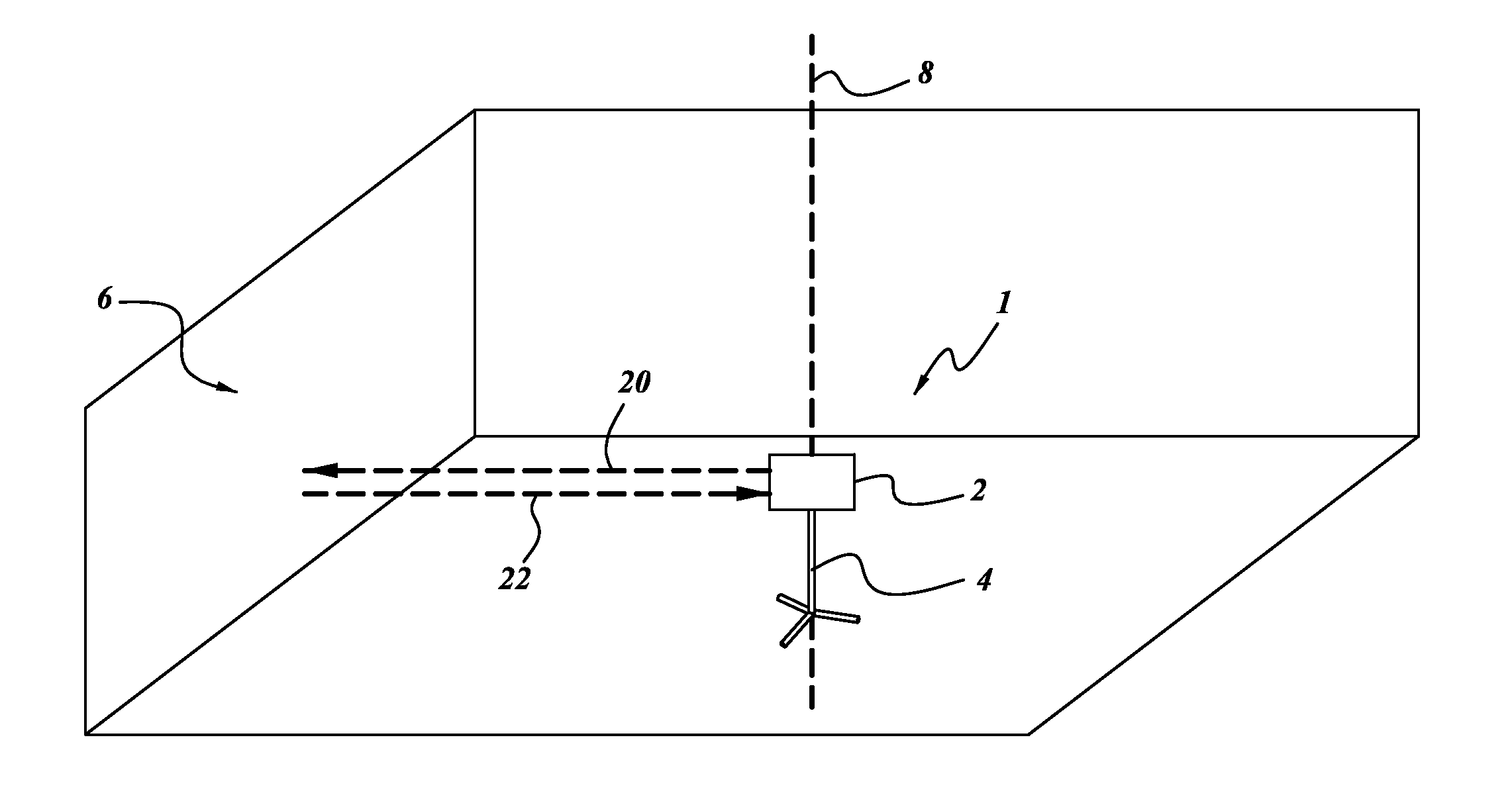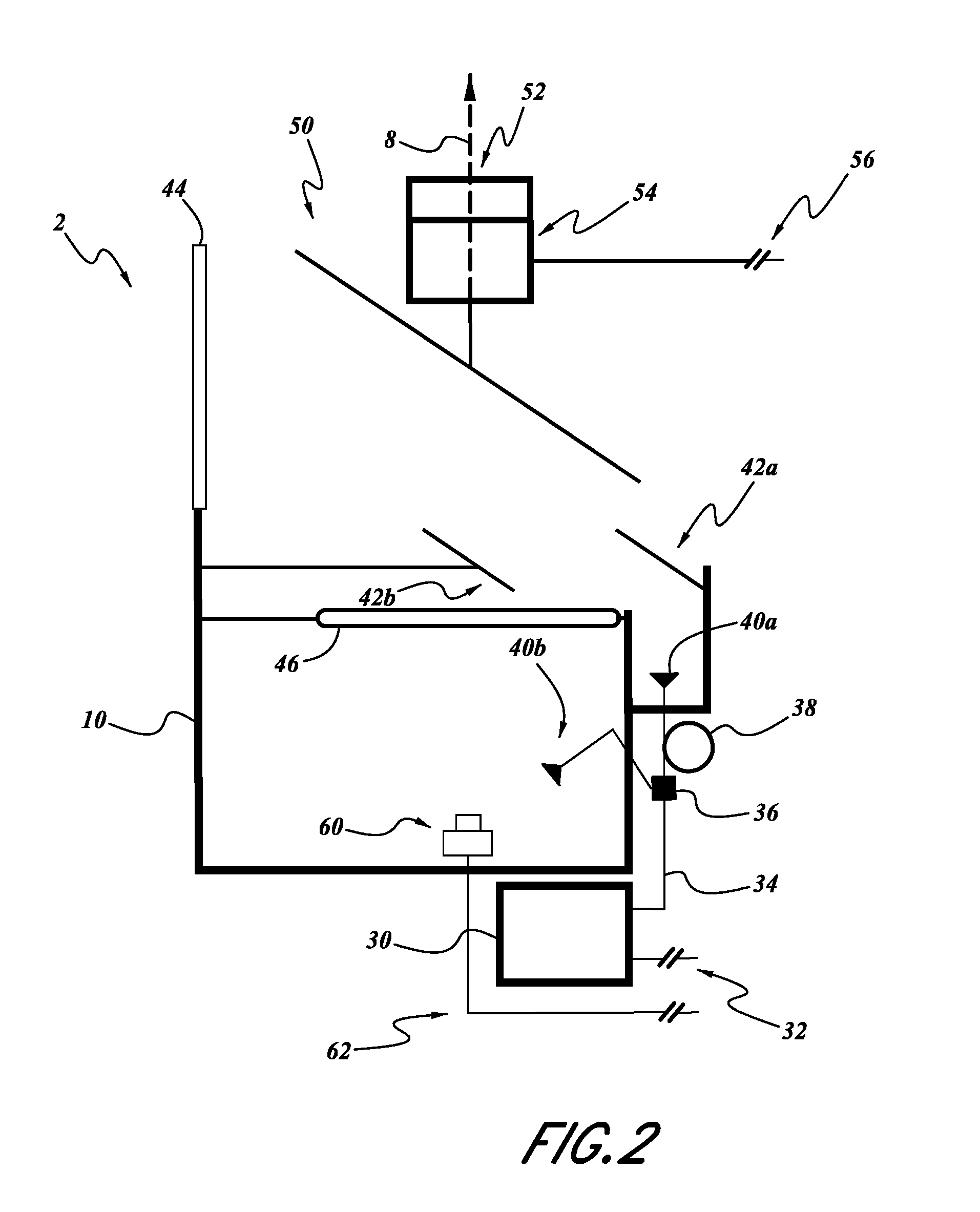LiDAR scanner
a scanner and lidar technology, applied in the field of metals, can solve the problems of time-consuming and expensive processing of stereo imagery, and achieve the effect of low cos
- Summary
- Abstract
- Description
- Claims
- Application Information
AI Technical Summary
Benefits of technology
Problems solved by technology
Method used
Image
Examples
Embodiment Construction
[0023]FIG. 1 depicts an embodiment position sensing device 1. The position sensing device is shown in an arbitrary environment, depicted as a walled room. However, it will be understood that the position sensing device 1 can be used in other environments such as a construction site, a mine, a laboratory, or other indoor and outdoor environments. The position sensing device 1 can be configured to measure at least one point, or further at least one spatial map of a portion of the environment, such as an object 6 in the room. For example, in the context of the room, the object 6 measured by the position sensing device 1 can be one or more walls of the room. In some embodiments the position sensing device 1 can measure a particular set of separate and discrete points, whereas in further embodiments the position sensing device 1 can measure a continuous span of points, as will be described further below. The measurement can be made using an electromagnetic pulse 20 (further described bel...
PUM
 Login to View More
Login to View More Abstract
Description
Claims
Application Information
 Login to View More
Login to View More - R&D
- Intellectual Property
- Life Sciences
- Materials
- Tech Scout
- Unparalleled Data Quality
- Higher Quality Content
- 60% Fewer Hallucinations
Browse by: Latest US Patents, China's latest patents, Technical Efficacy Thesaurus, Application Domain, Technology Topic, Popular Technical Reports.
© 2025 PatSnap. All rights reserved.Legal|Privacy policy|Modern Slavery Act Transparency Statement|Sitemap|About US| Contact US: help@patsnap.com



